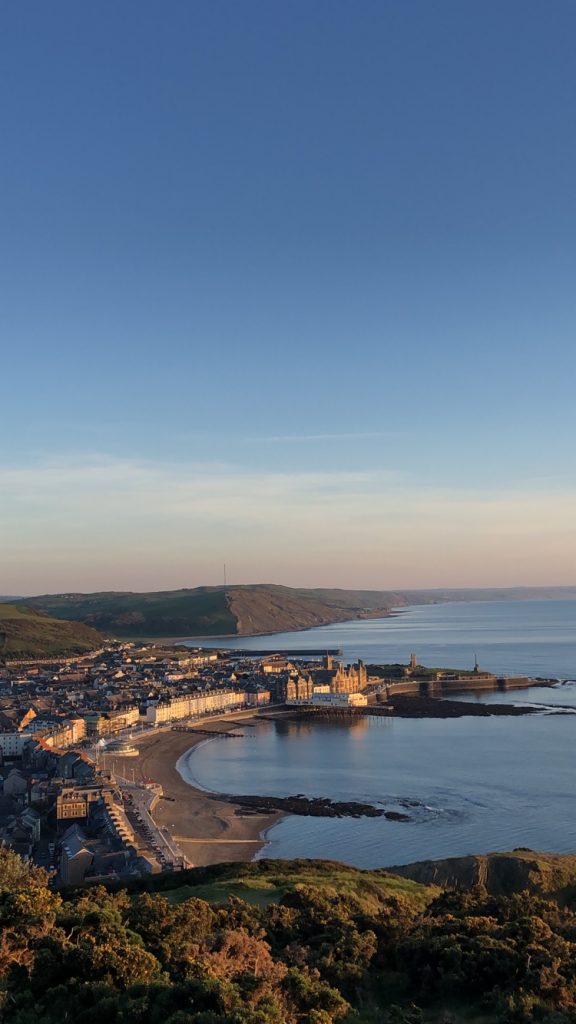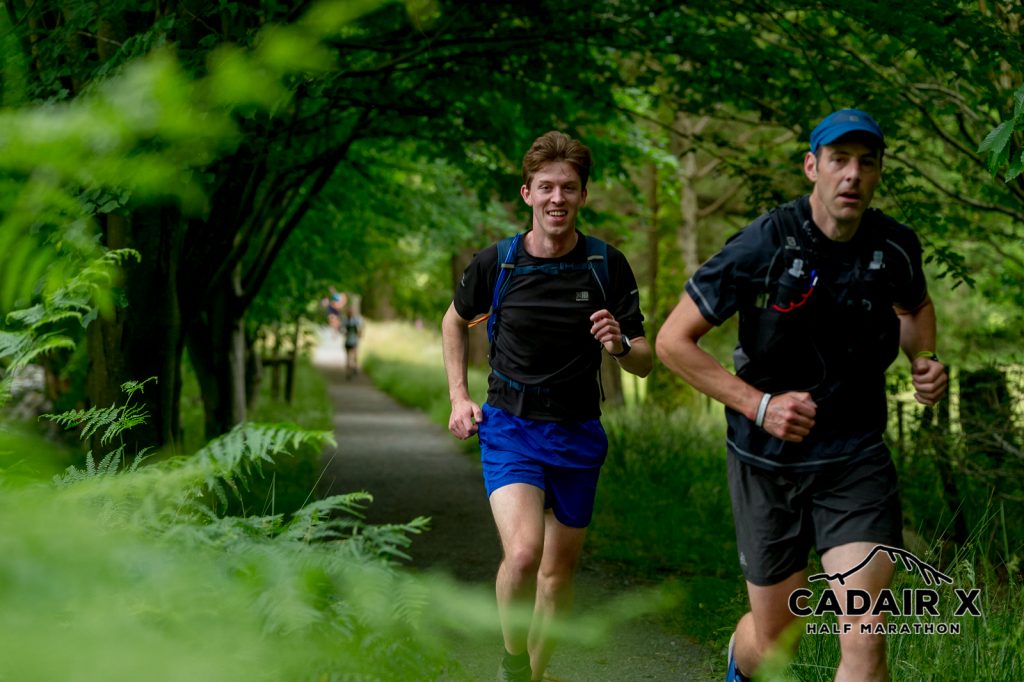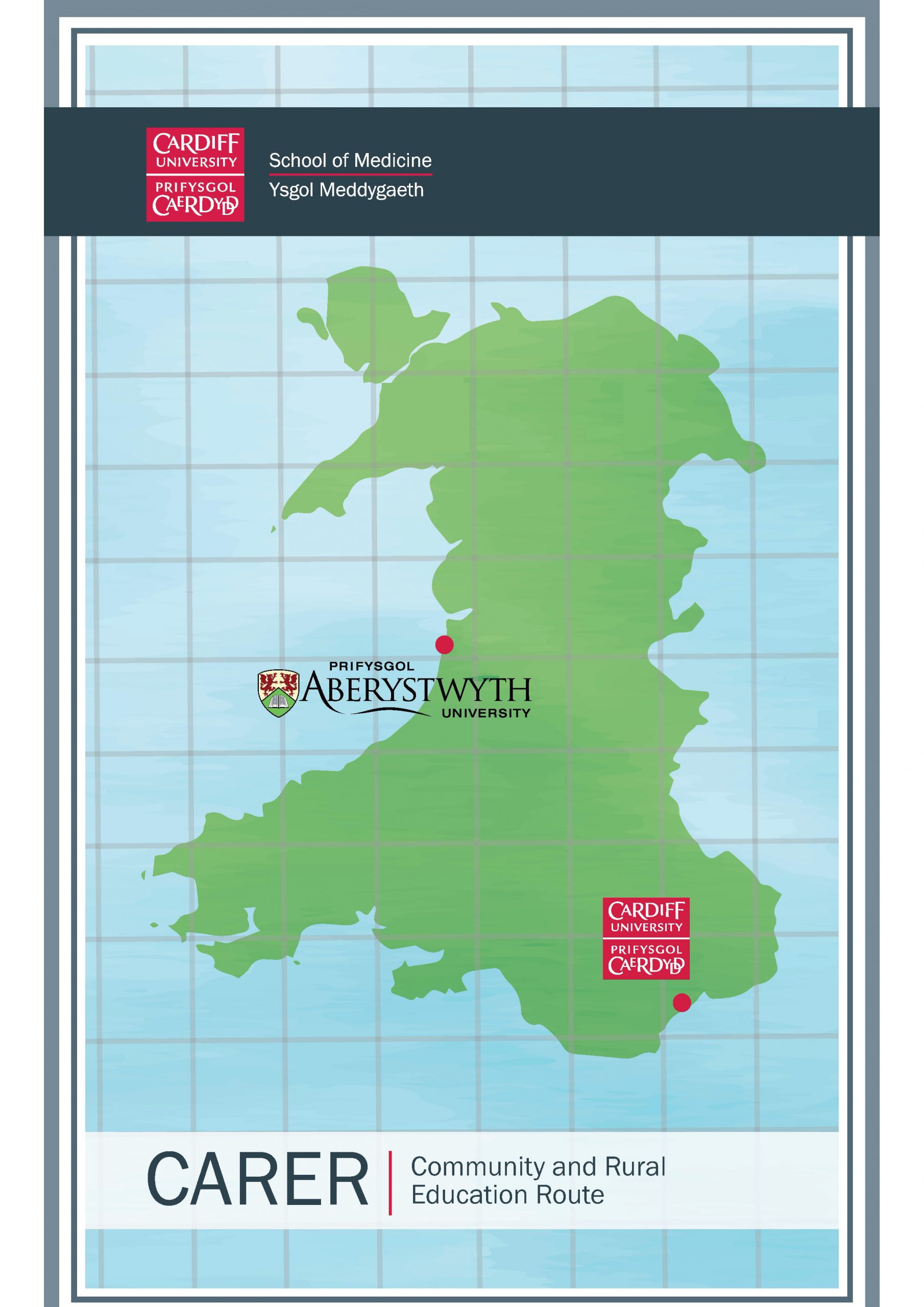Thinking back
27 August 2020The third year of studying medicine at Cardiff is where you start your clinical placement. Sometimes this conjures up images for the public of smartly dressed young men in pressed white coats looking at glass vials on hospital wards – when in fact, the only thing that’s stayed the same is looking smart for patients.
I took part in the pilot year of the Rural Education Route or RER at Cardiff, a year long placement outside of hospitals and instead based in rural general practice.
Where did you live?
There are two sites for the RER: I was in Aberystwyth. Aber is a small university town on the coast in Mid Wales about two and a half hours north of Cardiff, with about 16,000 locals and about 8,000 students.
What was Aberystwyth like?
The sea and the surrounding hills mean Aber is in a beautiful location, and because it is the largest town nearby there are better facilities and a stronger sense of community than I could have expected before arriving.

Everyone I met at Aber university was friendly, unassuming and welcoming – from faculty to students to staff, we were included and encouraged to join in with what was available.
Where were you on placement?
The GP surgery I was in for almost the whole year was in a town 45 minutes north called Machynlleth. Mach was the capital of wales in the 15th century but is now a small town of about 2,500 people. Spread around it are small villages where slate used to be mined, and an hour north of the area there is the beginning of Snowdonia national park. In total the surgery in Machynlleth covers a much larger area and about 7,000 patients (which are spread quite thin over the area – it really is a rural population!), and it also has a 14 bed community hospital across the road which plays host to visiting consultant clinics for the area.
What did you do for placement?
For more than half of each week I was on placement in the surgery, from 9am to usually a little after 5pm. As I got used to placement and I saw more and more patients and conditions I was gradually allowed to see patients on my own – I would welcome them in and take a full history and examination and take it from there. If I thought I knew what to do I would talk to the patient about their options, suggest what I thought was best for them, and call in the doctor (who would have seen another patient in that time). We would recap the case and discuss it, and if I was at a loss they would take over everything until the patient left. It was always me that wrote the medical notes for the consultation and often by the end of the year my appointments were finished by my writing their referral letters as well, for specialist appointments or for tests like an ultrasound or CT scan.
I also sat in with practice nurses for clinics in asthma, diabetes, spirometry, immunisations and baby checks and lots of other routine practice – as well as gradually beginning to do my own bloods clinic once a fortnight.
Outside of placement, we had one day a week where the seven students based in Aberystwyth came together from their separate surgeries to have joint teaching, tutorials and lectures delivered. These were all the same materials as would normally be covered in third year, and the only difference was the location and the schedule they were delivered in.
And apart from general practice, to make sure we had covered important learning points from third year that hospital students experienced we all spent a month in the local district general hospital, Bronglais. There we did placement in general surgery and in A&E to complement the general practice we saw.
What did you do in your free time?
Like a lot of other rural, coastal locations, Aberystwyth is quite sport focused. I was amazed when I arrived at how healthy most people I saw were, and it encouraged me to get involved locally as well. I decided to join the university Athletics and Harriers club, and soon I was training with them twice a week as well as going on socials.
Having a circle of friends from the local area was one of the best decisions I made whilst in Aber and having a group to encourage you to stay active makes it that much easier. Because of friends in the harriers I did several races during the year, including a 50km race, several trail races up steep hills, weekly parkrun 5km events and two half marathons! On top of all that, we were all given free access to the university swimming pool, gym and all the classes which took place.

Besides such healthy behaviour, Aberystwyth was a fun place to go out once a week – there are lots of great pubs, most of which do good food and all of which do cheap pints. There are also some fantastic restaurants in town or in the nearby villages like Aberaeron.
How did it compare to the ‘normal’ third year at Cardiff?
If I hadn’t taken a leap of faith and taken part in the RER, my year would have been very different.
For one thing, I wouldn’t have been in the same place for the year, unless all three of my placement rotations had been in South Wales. Most third year students leave Cardiff during third year for two months at a time, and can be as far from Cardiff as Bangor or Wrexham.
I probably also would have been mostly taught in hospitals – though there is an option to do a two month stint in (non-rural) general practice.
Having kept in touch with all my friends who hadn’t chosen the RER, it is fair to say we had very different experiences in third year. On the one hand, they were in Cardiff more often, they saw the rest of the year group more often and some of them had fantastic experiences with certain consultants, rare conditions or impressive surgeries. At the start of the year I was more concerned I might be missing out – and that is a normal thing to worry about, especially as part of a much smaller group of students who are away from Cardiff. However, as the year went on the benefits I was gaining from the RER program started to show through. I had the same teachers and GPs all year, and we all got to know one another and have strong teaching relationships – I wasn’t being bounced pillar to post inside a hospital, with new doctors and new teams to meet every week. And where they had exposure to some dramatic interventions that are only possible inside large hospitals, I was seeing a lot more patients every day and was having to work less to learn about them. I got to perform a lot more of my own histories and examinations, I saw a lot more conditions every week, I did far more clinical skills and I got more confident in my own judgments for both diagnoses and treatment plans.
Some of these benefits have become more obvious after a year in hospitals – now I feel I can compare two experiences of my own, rather than my third year versus that of a friend. For instance, several GPs told me early on “you never know what’s coming through the door.” They weren’t referring to just the variety of cases I would have to see – which was beyond what was expected for third year and regularly included dermatology, paediatrics, mental health, care of the elderly, palliative care and neurology. They were also warning me that what a patient says is the problem might not be their only problem – and it might not be their most important problem. I was incredibly lucky to have this kind of teaching to start my experience of clinical placement and to help me form habits for future years and my eventual practice. I cannot overstate how grateful I still am for the teaching I received from my GP tutors.
Final words
If you are in years 1 & 2 at Cardiff, or if you are at school and applying for medicine, please consider RER as one of your options! It is an amazing opportunity, and it will make you a better doctor*.
*The RER is part of a style of placement which in medical education research is called ‘Longitudinal Integrated Clerkship’, or LIC. LICs focus on relationships with patients, are often based rurally or in general practice settings, and have been the subject of research for almost 25 years. They have been praised for the various benefits they confer to students that take part and Cardiff’s RER is only one of the more recent programs to start up internationally. If you want to read some of the research into LICs – the evidence that shows that they work as a method of medical education – a good place to start is the research page of the Consortium for Longitudinal Integrated Clerkships‘ website.


